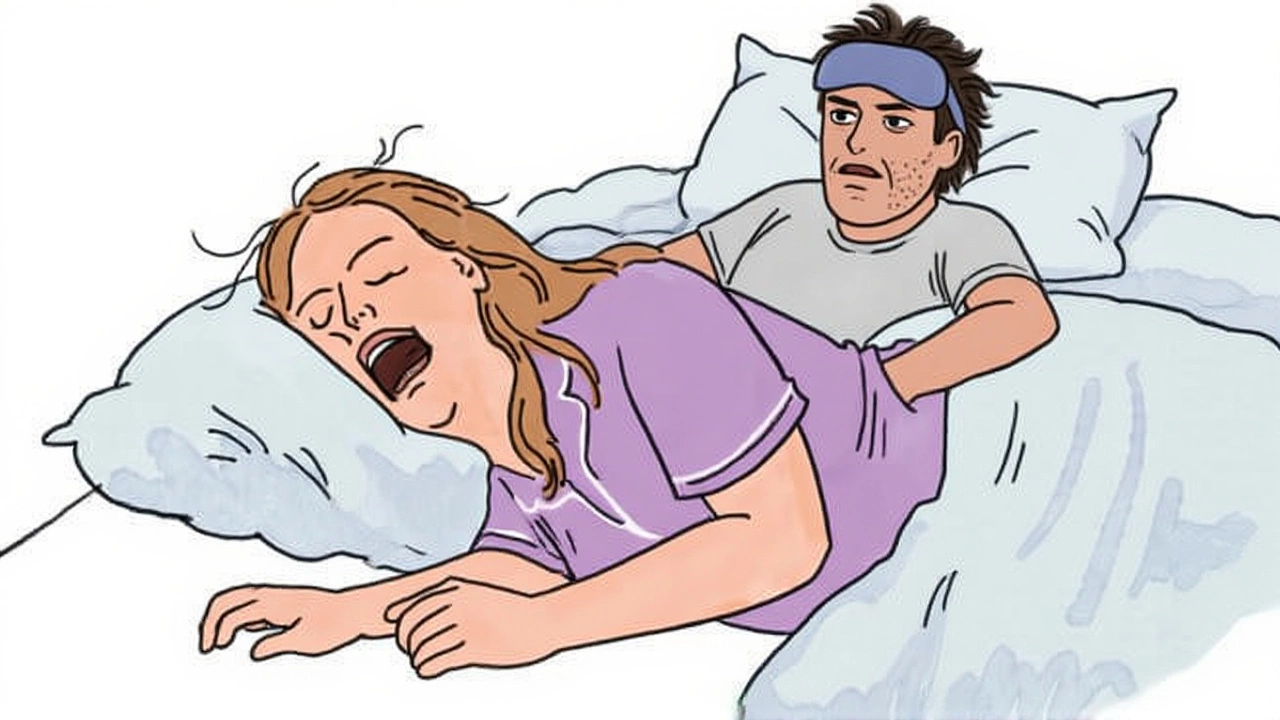When Dr. Nimrod Maimon, professor of health sciences and head of internal medicine at Soroka University Medical Center in Be'er Sheva, published a startling finding in the Journal of Clinical Sleep Medicine this March.
The study, involving snoring measurements from 1,875 patients referred for sleep‑disorder evaluation, shows that 88% of women actually snore – yet only 72% admit to it. Men, by contrast, report snoring at rates that mirror the 92.6% objective detection. The gap isn’t about volume; women’s average maximal intensity was 50 decibels, virtually identical to men’s 51.7 decibels.
Why This Matters: The Hidden Burden on Women
Under‑reporting creates a diagnostic blind spot. Women who deny snoring often skip follow‑up sleep studies, delaying treatment for obstructive sleep apnea (OSA). That delay translates into a 28% higher mortality risk compared with men, according to research in Oxford Academic’s Sleep journal.
- 88% of women objectively snored during polysomnography.
- Only 72% self‑reported snoring.
- Mean intensity: 50 dB (women) vs 51.7 dB (men).
- 49% of women had severe/very severe snoring, but just 40% rated themselves as severe.
- Diagnostic delay for women with OSA averages 2.5 years longer than for men.
Study Design and Core Findings
The research team applied digital sound meters during overnight sleep studies at the Ben‑Gurion University of the Negev’s Faculty of Health Sciences. A total of 675 women and 1,200 men were examined. Objective snoring was defined as any sound exceeding 30 dB for at least 10 seconds. Key numbers emerged:
• Objective snoring: 591 of 675 women (88%) vs 1,111 of 1,200 men (92.6%).
• Self‑reported snoring: 496 of 675 women (72%) vs 1,118 of 1,200 men (93.1%).
• Severe/very severe intensity (≥50 dB): 329 women (49%) vs 460 men (38%).
Dr. Maimon summarized, “We found that although no difference in snoring intensity was found between genders, women tend to underreport the fact that they snore and to underestimate the loudness of their snoring.”
Perspectives from the Field
Sleep specialist Dr. Laura Chen, who heads the Sleep Disorders Center at Harvard Medical School, says, “Women often present with fatigue, insomnia, or morning headaches rather than classic loud snoring. This study quantifies the bias that keeps them from being screened early.”
Women's health advocate Maria Alvarez of the National Women’s Health Foundation adds, “The stigma around snoring being a ‘male’ issue discourages many women from voicing concerns. Public awareness campaigns must change that narrative.”
Broader Context: Age, Menopause, and Global Trends
Complementary data from a population‑based telephone survey of 3,624 adults in Taiwan echo the gender‑age interaction. Conducted by the Taiwan Sleep Health SurveyTaiwan, the study found snoring prevalence spikes for women after age 50—the typical menopausal window—raising the odds of snoring by 1.63×.
The British Sleep Apnoea and Snoring Association reports that roughly half of middle‑aged men snore, yet women’s snoring prevalence climbs sharply after menopause, often peaking between ages 60‑64.

Impact on Diagnosis and Treatment
Because women frequently miss the classic “loud snoring” cue, primary‑care physicians may attribute daytime fatigue to depression or anxiety, postponing polysomnography referrals. This misdirection contributes to longer wait times and, ultimately, higher morbidity. The study recommends routine objective screening for all patients, regardless of self‑reported snoring.
What’s Next? Research and Policy Moves
Dr. Maimon’s team plans a longitudinal follow‑up to track cardiovascular outcomes in women who were initially misdiagnosed. Meanwhile, the Israeli Ministry of Health is reviewing the findings to update national sleep‑disorder guidelines, potentially mandating questionnaire adjustments that specifically ask about perceived snoring intensity.
Historical Snapshot: The Snoring Stereotype
For decades, medical textbooks listed snoring as a predominantly male symptom. Early 20th‑century studies, limited to veteran populations, reinforced that view. Modern imaging shows airway collapsibility similar across sexes, but hormonal shifts—especially estrogen decline—alter muscle tone in women, partly explaining the post‑menopausal rise.
Breaking the myth matters not just for academic precision; it reshapes insurance coverage, workplace accommodations, and even relationship counseling, where unacknowledged snoring can strain couples.
Frequently Asked Questions
How does under‑reporting snoring affect women’s health outcomes?
When women don’t disclose snoring, doctors often miss obstructive sleep apnea, leading to untreated hypertension, heart disease, and a 28% higher mortality risk compared with men who are diagnosed earlier.
What age groups are most at risk for severe snoring in women?
The risk climbs after age 50, aligning with menopause. Studies in Taiwan and the UK show a sharp increase in both prevalence and intensity for women aged 55‑64.
Are there simple screening tools for women who don’t think they snore?
Yes. Questionnaires now include items about partner reports, nighttime awakenings, and morning headaches—symptoms that often flag hidden snoring in women.
What role does menopause play in women’s snoring patterns?
Hormonal changes reduce upper‑airway muscle tone, making the airway more collapsible. The Israeli study found women with menopausal syndrome were 1.6 times more likely to snore after adjusting for BMI and other factors.
What steps are health systems taking after this research?
In Israel, policymakers are revising sleep‑clinic referral criteria to require objective sound measurements for all patients, regardless of self‑reported snoring. Similar guideline reviews are underway in the UK and US.
